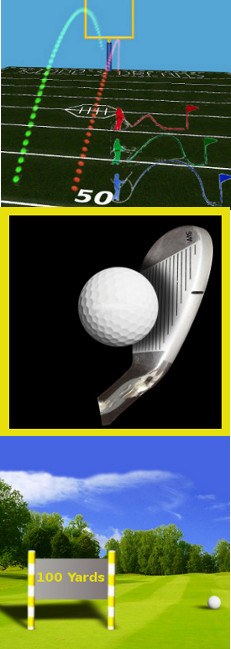
Whether you carry a full set of 14 golf clubs or a starter set with just nine or 10, you've got to know which club to hit from wherever your ball happens to lie. It seems like a daunting task, considering the practically infinite combinations of distance, hazard placement and other factors, but it will become second nature once you've played and practiced for a while.
There are two primary inputs in determining the club for a specific shot: Your distance to the target, and how far you normally hit each club. There are several different ways to figure out your yardage to the green or another target. Knowing your own club distances takes time and experience, but you can start on the driving range; most ranges have markers set at specific distances, such as 50, 100, 150 and 250 yards. Here's how:
- Start with your shortest club (sand wedge or pitching wedge) and aim at the nearest target.
- When you hit a shot solidly and fairly straight, estimate how far it landed in front of or behind the closest target – for instance, 5 yards past the 100-yard marker is a 105-yard shot. Remember, you want to know how far the ball traveled in the air, not including roll after landing.
- Move to the next club and continue through the bag.
- After you've got three measurements for solid hits, average them out – this is your yardage for that particular club.
As a general rule, most golfers will find 10-15 yards of difference from one club to the next. For example, if their 8-iron flies 140 yards on average, they'll hit a 7-iron between 150 – 155 yards.
Write down your average yardage for each club on a small sheet of paper for reference on the course. Before long, you'll know them all by heart. As your swing improves you'll hit the ball farther, so be mindful of shots that fly past the target and adjust your club yardages accordingly.
If you're taking lessons, the pro can help you determine how far you hit different clubs. The most accurate gauge is a launch monitor, which captures the speed and angle of your clubhead at the moment of impact and calculates exactly how far the ball carries. Large retail golf shops often have indoor ranges equipped with launch monitors; your pro may have one as well.
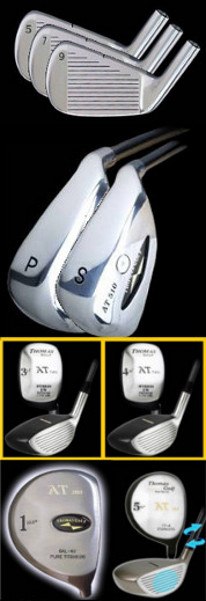
How to Choose the Correct Club for a Shot
Every golfer would love to play better, and most go about that process by trying to improve their swing. The thinking is simple – a better swing will lead to better shots, and better shots will lead to lower scores. Of course, an improved golf swing can help you shoot lower scores, so it is worth your time to work on your technique. However, golf is not about technique alone. A big part of the scores that you shoot is determined by the quality of your mental game. Do you make good decisions from the first tee to the last green? Are you able to hold yourself together when you start to get nervous? These attributes, along with your golf swing itself, will come together to determine the scores you are capable of shooting.
One often-overlooked aspect of the mental game is picking the right club for the shot at hand. There are an incredible number of variables involved in picking a club, and many amateur golfers get it wrong more than they get it right. In fact, many players simply don't put much thought at all into the job of selecting a club. They simply look out at the hole in front of them, get a yardage, and grab a club – without any real consideration for strategy. If you are going to reach your potential on the course, improving your ability to pick the right club at the right time is something that should be near the top of your priority list.
When you thinking about picking clubs, your mind probably first goes to selecting irons for approach shots. Obviously, you need to get it right when choosing a club for an approach, as hitting the ball short or long of the target could easily cost you a stroke or more. With that said, you also need to know how to pick the right club off the tee and around the green. Hitting a tee shot or a pitch shot with the right club is just as important as using the right iron on an approach. The only time on the golf course when club selection isn't a factor is when you are on the putting green – as you better be reaching for your putter at that time. Anywhere else on the course, however, you will need to think critically and decide which club is going to give you the best chance at success.
Club selection is something that usually gets better with experience. As you continue to play more and more golf, you should find that you become more adept at choosing the right stick for the shot. To speed up that process, there are a few tips and tricks that you can take with you out onto the course. The content below highlights some of the points to remember as you are choosing clubs. Any instruction that is contained below is based on a right handed golfer, so please reverse the directions if you happen to play left handed.

Club Selection Basics
Before getting into some of the more complex strategy points related to picking clubs, there are some basics that need to be covered. Think of these as the first set of rules that cover how you should pick your clubs – as long as you aren't violating any of these rules with your club selection choices, you will at least be on the right track. No matter what style of golf you like to play, or what the strengths and weaknesses of your game happen to be, you can use these basics to lower your scores in your very next round.
- Don't Hit Your Irons at 100% Effort. This is a rule that is broken on a regular basis by the majority of amateur golfers. Most players figure out the yardage they have in to the target for an approach shot, and they then select the club that is capable of hitting the ball that far under perfect circumstances. Unfortunately, circumstances are rarely perfect. Instead, the ball usually comes up short of its maximum potential distance for one reason or another, and the ball is left short of the hole. To improve your club selection immediately, stop picking irons based on the best possible scenario – instead, pick the club that is most likely to leave the ball close to the hole. For example, if you are capable of hitting an 8-iron 150 yards when you catch it just right, consider using a 7-iron for a 150-yard approach shot to allow yourself some margin for error. It is possible that you will hit the ball a few yards past the hole, but most likely your distance will be just about right.
- Never Try a Shot You Don't Think You Can Hit. This might sound obvious, but it is a rule that is broken all the time. When facing a long carry over water or another hazard, don't attempt the shot unless you are completely sure you have the right club in your hands. You can always choose to lay up to a better yardage and avoid the penalty shots that come with a failed attempt. So, for another example, picture an approach shot of 230 yards over a water hazard. Beyond the green is out of bounds, so erring long isn't really an option in this case. If you hit your 3-wood 250 yards and your hybrid club only 220, you are stuck in a bad situation. Instead of picking the 3-wood and hoping it stops quickly, or picking the hybrid in the hopes that you can crush it, consider laying up and keeping your ball safe. Since there is no great club selection option for the shot, back off and simply hit a different shot. This strategy requires patience, but it will almost always pay off on your scorecard at the end of the day.
- Total Commitment is Required. When you have finished the club selection process, you need to have total, 100% commitment to the club you have chosen each and every time. Golf is a game about confidence, and your confidence can be eaten away quickly if you aren't convinced that the club in your hands is the right one. Go through your process to select a club and then tell yourself that you are holding the perfect club for the job. Obviously, you are never going to be able to pick the perfect club on every shot, but you still need to believe in yourself on this point. Any doubts that you have about the club will show up in your swing – and hesitant swings lead to bad results. Total commitment to each shot, including the club selection, is something that most of the top golfers have in common.
Keep the three club selection rules above near the top of your mind when you are picking clubs for any shot throughout a round. Even if you don't improve anything else about your club selection process, following these three rules will take you a long way.
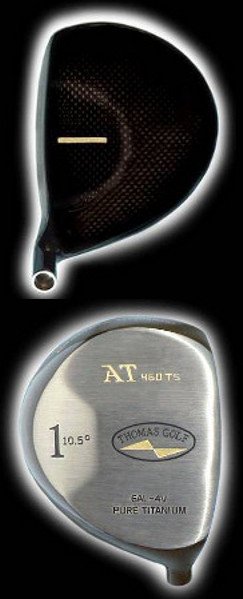
Choosing the Right Club for a Tee Shot
You can't play golf unless you pick a club to hit off the tee - it's the only way to get the game started. Once you are off the tee, you can move on to playing your way into the hole. Picking the right club off the tee is a skill that most golfers never develop. Instead of thinking their way around the course, using strategy to conquer each hole, most players choose to simply reach for the driver and swing away. While it is fun to hit drives way down the fairway, it is even more fun to shoot good scores - and that will only happen when you pick smart clubs time after time.
With that said, you don't have to simply put away your driver and hit three woods and hybrid clubs off the tee all day long. The driver is an important part of any golfer's game plan, but you have to use it intelligently. Long drives do you no good if they wind up in the woods or in the water, so it only makes sense to hit the driver when the course gives you the necessary room to do so. Pick your spots, and it will be even more satisfying when you launch one right down the middle of the fairway.
To make the best possible club selections off the tee during your next round, consider the following tips.
- Never Punish a Straight Shot. As you stand on the tee, you are probably picturing a ball flight that curves one direction or the other based on your typical patterns. Most golfers favor either a draw or a fade, so you should always factor that into your decisions on the tee. However, you never want to choose a club that is going to put your ball in trouble if you happen to hit it straight. For example, if you are planning on hitting a driver from the tee with a draw, make sure you have enough room to hit that driver if the ball happens to fly straight down the middle. Should there not be enough room straight ahead for your driver, consider going down to a three wood or another option to protect against the straight ball. It is hard to make a confident swing when you are afraid of hitting the ball straight, so make sure a straight shot is always going to be okay.
- Find Your Ideal Distance. Tee shots are set up shots. With the exception of the par threes, or maybe a short par four, you aren't trying to hit the ball on the green with your tee shot. Instead, you are trying to position your ball to make it easier to hit the green with your next shot. Always keep that in mind when selecting a club on the tee. Golf is a like a puzzle that you are trying to solve, and each golf course has a different solution. Pick clubs that will put your ball in a distance range that you are comfortable with for your approach shots. Some players like to get in around 100 yards for a short wedge, while others are more comfortable back around 140 or 150. Think ahead while on the tee and choose the club that will place your ball at a distance that you love.
- Don't Feel Forced. Sometimes, you will walk up to a particular tee shot and you will just have a bad feeling about what lies in front of you. If you aren't comfortable with any of the usual options, don't be afraid to lay up off the tee and simply get your ball in play - even if it is a par four. By choosing to go for the green in three shots instead of two, you can take the big numbers out of play. You probably aren't going to make a par very often with this technique, but you should be able to avoid making a 7 or 8 that way also. There are no rules that require you to take on long shots when you don't feel comfortable - laying up is always an acceptable option to keep your ball out of trouble.
Club selection off the tee is all about improving your odds. You want to limit the chances of hitting your ball into a bad spot while simultaneously positioning yourself to attack the flag aggressively. The ideal game plan for you is going to depend on your strengths and weaknesses, but the tips above should point you in the right direction off the tee.
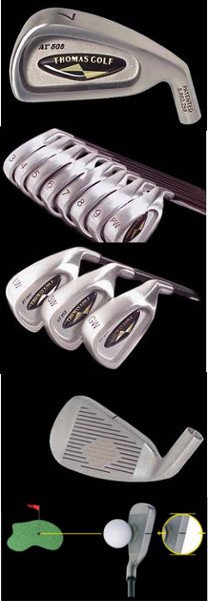
Picking Irons for Approach Shots
Once you have successfully navigated the tee shot and you find your ball in the fairway (or in the rough), it will be time to pick the perfect club to attack the green. Most of the time, you will be picking a club that can get the ball close to the hole, but not always. For example, if the hole is located dangerously close to a hazard, you may decide to use a different club to play away from the trouble. Remember, you don't have to fire at the flag on every hole to play good golf - you just need to play the hole in as few strokes as possible.
Just as with the tee shots, there are certain tips that can help you make solid decisions as you pull a club out of your bag for a given approach shot. Use the ideas below during your club selection process and you should improve your positioning throughout the round.
- Eliminate Either Long or Short. On most holes, either long or short is going to be significantly worse than the other option. For example, there may be a deep bunker guarding the front of the green, with very little in the way of trouble on the back. In that case, obviously, you would want to err on the long side in the event that you miss the green. When picking a club, evaluate the design of the green and choose the club that will take either the front or the back out of play. That way, even if you don't hit a great shot close to the hole, you should at least be able to avoid serious trouble that could lead to a big number.
- Consider the Lie. The way your ball is laying in the grass will have a lot to do with which club you should use. A clean lie in the fairway will allow you to use whichever club you prefer, but if the ball is sitting down in the rough you might have to use more loft just to get the ball up into the air. Never ignore the lie when you are picking the right club for the shot - overlooking this crucial detail could lead to a big problem.
- Watch the Wind. Ignoring the impact of the wind on your ball flight is a crucial mistake that is made by a surprising number of golfers. The wind can have a major impact on the flight of your iron shots, so look for signs of a breeze and respond accordingly. Hitting the ball into the wind will obviously shorten the overall distance of the flight, but hitting across the wind can also cost you distance. When playing downwind, resist the temptation to hit the ball high in the air and instead keep it down near the ground to avoid the wind as much as possible. Any time the wind affects your golf ball, you lose control over the shot - so the best method you can use is to pick shots that minimize the influence of the breeze.
Choosing the right club doesn't need to be complicated or time consuming, but you do need to have a logical pattern of thinking prior to each shot. Instead of just looking at the yardage and reaching for a club, think through all of the points mentioned above before coming to a decision.
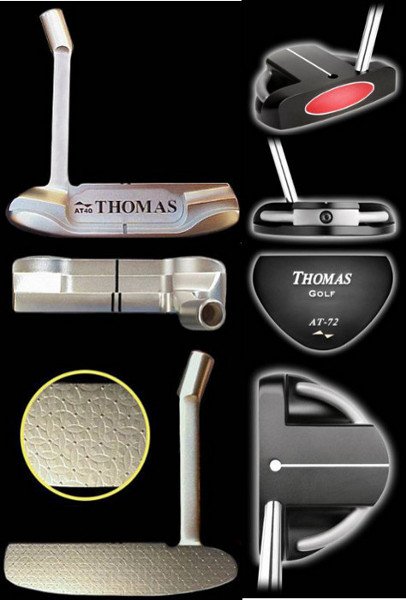
Short Game Club Selection
As mentioned earlier, club selection in the short game is just as important as it is in the long game. Picking the right club to hit a pitch or chip shot from around the green will make it far easier to put the ball closer to the hole. In this case, you aren't worried so much about the overall distance that the club can hit the ball – rather, you are wanting to find the right loft to create an appropriate trajectory.
When you walk up to your ball somewhere in the grass around the green, take a look at your lie as well as the ground between your ball and the hole. Are there any significant slopes to be concerned with? Do you need to fly the ball most of the way to the hole, or can you play a bump-and-run style shot? These are questions that you will need to ask yourself right away, as the answers to these questions determine which club is going to be the right choice.
Naturally, you will want to use a low-lofted club when you are playing a bump-and-run type of shot. Keeping the ball low to the ground is a great idea when possible in the short game, because those kinds of shots are far more predictable. Practice a low pitch shot with one of your longer clubs and have that shot available to you when the situation is right.
Of course, you aren't going to always be able to keep the ball low to the ground. If you need to put the ball up in the air to stop it around the hole, use a more-lofted club like a gap wedge or sand wedge. These shots are slightly more unpredictable than low shots, but they can do wonders to get you out of trouble.
Aside from the shot that you are facing, the other element to consider in your short game club selection is your personal preference and confidence level. There is plenty of room for creativity and personality in the short game, so don't be afraid to favor one particular club that seems to treat you well. For instance, if you love hitting pitch shots with your sand wedge, feel free to do so even if others would play that same shot on a lower trajectory.
Picking the right club time after time is one of the most important skills in golf. If you can consistently put the correct club in your hands, you will instantly improve your play without making a single change to your golf swing. The best players on the course are the ones who combine good decision making with solid execution – and that is exactly what you should be trying to do. Think through each club selection you make during a given round, and never just grab a club based on yardage alone. By using the simple tips contained above, you could potentially lower your score in the very next round that you play.






